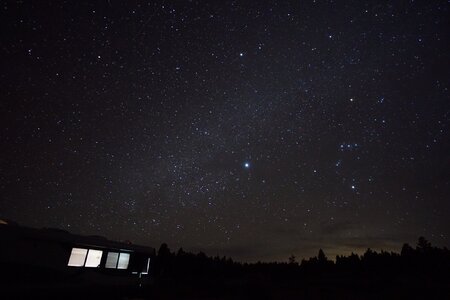Astrnmrtom
Active Member
- Followers
- 1
- Following
- 0
- Joined
- May 20, 2021
- Posts
- 82
- Likes Received
- 170
- Name
- Thomas M
I've enjoyed playing with cameras since the late 60s early 70s, and took the leap into digital in '99-ish with an Olympus c-2020. Going digital horrified my photographer friend because no way could you take decent photos with a 2 megapixel sensor! Every time I'd share a photo he'd complain about how horrible digital cameras were, that he'd never own one, and film was the only way to go. For me however it was game changer. It allowed me to be creative, freeing me from the lag time between shooting and seeing the photo and the worry of "wasting" film while experimenting and learning. It wasn't very long at all before I felt the camera and I were one in a sense, it seeing what I saw because I could shoot, look, delete, adjust, and reshoot on the fly. I LOVED digital!
Until just after the first of the year 2021, my primary - do everything camera was a Fuji S-X1 Bridge camera but there was one thing the Fuji couldn't do, and that was long exposure night stuff. I'm an amateur astronomer who is primarily a visual observer, but still likes to image transient events like comets, eclipses, aurora, etc. I have a friend who's owned a NEX-7 for years, and have been impressed with the Sony's ability to do casual astrophotography. After my complete failure to capture the Zodiacal Light with my Fuji this last February, I decided to pick up a lightly used a6000, two lens kit, and a 12mm f/2.8 manual lens for night work. I've ended up grabbing the Sony for day hikes because it's so light and compact. The more I use it the more I like it. It's a very capable little camera.
Here's a shot of Orion taken with the a6000 from a boondocking campsite north of Zion National Park in Utah, in early April of 2021. There's no way my Fuji could do anything close to this kind of image. Two thumbs up for the Sony alpha!
Until just after the first of the year 2021, my primary - do everything camera was a Fuji S-X1 Bridge camera but there was one thing the Fuji couldn't do, and that was long exposure night stuff. I'm an amateur astronomer who is primarily a visual observer, but still likes to image transient events like comets, eclipses, aurora, etc. I have a friend who's owned a NEX-7 for years, and have been impressed with the Sony's ability to do casual astrophotography. After my complete failure to capture the Zodiacal Light with my Fuji this last February, I decided to pick up a lightly used a6000, two lens kit, and a 12mm f/2.8 manual lens for night work. I've ended up grabbing the Sony for day hikes because it's so light and compact. The more I use it the more I like it. It's a very capable little camera.
Here's a shot of Orion taken with the a6000 from a boondocking campsite north of Zion National Park in Utah, in early April of 2021. There's no way my Fuji could do anything close to this kind of image. Two thumbs up for the Sony alpha!

